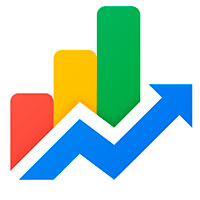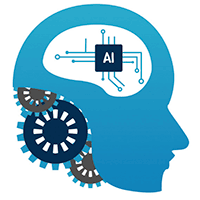
Key Factors to Consider When Choosing a Forex Advisor. Risk Management. Fees and Costs. Compatibility with Your Trading Style.

This article explores the benefits and risks associated with using Forex Expert Advisors, providing insights into how traders can maximize their potential while mitigating potential downsides.

An annual roundup reviewing the most successful Forex Expert Advisors (EAs) based on their performance, strategies employed, reliability, and user feedback. This piece would provide insights into which EAs have been market leaders and why.

The future of Forex EAs lies in the further integration of AI and machine learning technologies, enabling the creation of even more sophisticated and adaptive trading systems. These advancements could lead to EAs that better understand market sentiment, predict future movements with greater accuracy, and manage risks in more nuanced ways.

The advent of Forex Expert Advisors (EAs) has significantly altered the terrain of currency trading. These automated systems, capable of executing trades based on predetermined criteria without human intervention, have democratized access to sophisticated trading strategies, once the exclusive domain of institutional investors.

The concept of automated trading has been around for decades, but the accessibility and sophistication of Forex EAs have seen significant advancements in the past few years. Initially, automated trading systems were rudimentary, focusing on simple indicators like moving averages.

Forex EAs are at the forefront of leveraging algorithmic trading strategies, which are based on a set of instructions for placing trades in order to generate profits at a speed and frequency that is impossible for a human trader. With the integration of machine learning, these systems can now analyze large datasets to identify patterns, trends, and signals relevant to the Forex market.

By enabling continuous, algorithm-based trading, EAs contribute to the efficiency of the Forex market. They can instantly react to market movements and news events, providing liquidity and stabilizing currency prices through their high-volume trading activities.
| Rank | Expert Advisor | Rating | Free | Yield | Class | Type | Deposit | Lev. |
| 1 | EcoTrade Forex Robot | 9.9 | 15% | long-term, low-risk trading strategy | hedge, trend | $100 | 200 | |
|---|---|---|---|---|---|---|---|---|
| 2 | ScalperX | 9.9 | 40% | high-frequency trading | short-term, high-frequency scalping EA | $500 | 200 | |
| 3 | FXCipher | 9.89 | 10% | short term | grid | $300 | 200 | |
| 4 | CarinaBot | 9.88 | 52.32% | middle term, short term | trend, grid, hedge | $100 | 500 | |
| 5 | Fortnite | 9.87 | 135% | middle term | hedge, trend | $500 | 100 | |
| 6 | Tickeron AI robot | 9.84 | 117% | middle term | trend | $100 | 400 | |
| 7 | Learn2Trade | 9.83 | 160% | middle term | trend | $1000 | 100 | |
| 8 | Auto Recovery EA | 9.82 | 37% | middle term, short term | hedge, trend | $100 | 200 | |
| 9 | Coinrule | 9.81 | 270% | short term | trend | $1000 | 100 | |
| 10 | Forex Trendy | 9.80 | 90% | short term | trend, grid, hedge | $250 | 500 | |
| 11 | FX BlasterPRO | 9.79 | 180% | middle term | trend, grid, hedge | $1000 | 100 | |
| 12 | Waka Waka | 9.78 | 74% | short term | grid | $100 | 500 | |
| 13 | Renko EA | 9.78 | 41% | middle term, short term | grid | $100 | 200 | |
| 14 | EliteFxgo | 9.77 | 30% | middle term, short term | trend, grid, hedge | $1000 | 500 | |
| 15 | Stairsteps EA | 9.77 | 29% | short term | trend | $100 | 500 |
* Forex Rating accepts no liability for any errors in the Expert Advisors descriptions and information including annual yield or robot type. For the most recent EA information please visit the Forex AE's site.
© 2006-2025 Forex-Ratings.com
The usage of this website constitutes acceptance of the following legal information.
Any contracts of financial instruments offered to conclude bear high risks and may result in the full loss of the deposited funds. Prior to making transactions one should get acquainted with the risks to which they relate. All the information featured on the website (reviews, brokers' news, comments, analysis, quotes, forecasts or other information materials provided by Forex Ratings, as well as information provided by the partners), including graphical information about the forex companies, brokers and dealing desks, is intended solely for informational purposes, is not a means of advertising them, and doesn't imply direct instructions for investing. Forex Ratings shall not be liable for any loss, including unlimited loss of funds, which may arise directly or indirectly from the usage of this information. The editorial staff of the website does not bear any responsibility whatsoever for the content of the comments or reviews made by the site users about the forex companies. The entire responsibility for the contents rests with the commentators. Reprint of the materials is available only with the permission of the editorial staff.
We use cookies to improve your experience and to make your stay with us more comfortable. By using Forex-Ratings.com website you agree to the cookies policy.